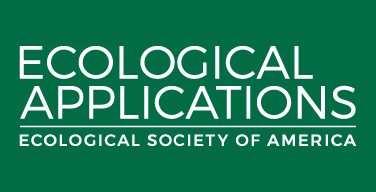
Crowding, Climate Change & the Case for Social Distancing Among Trees
A new analysis found that in crowded forests, trees were less tolerant of fire damage and were more susceptible to post-fire bark beetle attack.

A new analysis found that in crowded forests, trees were less tolerant of fire damage and were more susceptible to post-fire bark beetle attack.

UBCO researchers say restoring linear features may expand a wolf’s range, helping to reverse caribou declines.

Some marine species can help protect others from climate change by shielding them from heat, according to a new study by Texas A&M University at Galveston and other scientists.

A multiyear study spanning the physics, biology, ecology, and evolution of transparency in Lepidoptera conducted by several groups provides unique perspectives on the use of wing transparency in Lepidoptera self-defense.

A recently published study led by University of Hawai‘i (UH) at Mānoa researchers brought together experts from the fields of oceanography, genetics, ecology, fisheries biology, and social sciences to develop unprecedented insights into the natural and commercial flow of fish.

Animals that have strong site fidelity are having a difficult time adjusting to land-use change, says new research from the University of Wyoming and the University of Washington.

The recovery of the fisher, a charismatic, long-tailed forest carnivore, will likely be hindered by the increasing frequency and intensity of future wildfires, new research by Oregon State University indicates.

Concerns over foodborne risk from birds may not be as severe as once thought by produce farmers, according to research from the University of California, Davis, that found low instances of E. coli and Salmonella prevalence.

In a new study, University of Utah biologists found that mice at California monarch overwintering sites consume monarch butterflies.

A new nationwide analysis of 122 plans from 20 US cities, published today in Frontiers in Ecology and the Environment, found that many plans fail to explicitly define green infrastructure.

Habitat conservation can help buy time for heat-sensitive species in the face of climate change – but it might also leave them in a trap by preventing them from adapting in time, according to a new study recently published in the journal Ecology.

Research from a Texas A&M Galveston marine biologist shows mussel beds protect other species during hot days, highlighting the importance of protecting vulnerable habitats.

After a highly competitive search, Jean-Philippe Lessard will step into the role for one of the field’s leading journals.

Some marine species can help protect others from climate change by shielding them from heat, according to a new study by a Texas A&M University at Galveston professor.

Forest restoration and the preservation of the spotted owl are not mutually exclusive, says a new paper published in Frontiers in Ecology and the Environment.

In a study published in Ecological Applications, scientists used the satellite images, along with field observations from 40 different pastures grazed over a period of 10 years, to predict the performance of cattle grazing in Eastern Colorado throughout the summer season.

A comparison of age, sex and geographic origin of a bat species killed at wind turbines and living conspecifics from nearby populations now reveals that juveniles are killed more frequently than adults compared to their proportion in local populations.

New research from The University of Toledo spotlights the urgent need for policymakers and environmental managers to adopt a variety of solutions to overuse of road salts to melt away snow and ice.

Among the new members of the Governing Board selected by the ESA membership is Jay T. Lennon, a biologist at Indiana University Bloomington.

Shahid Naeem, head of the Earth Institute Center for Environmental Sustainability, has been elected president of the Ecological Society of America. Naeem will serve in 2023-2024.
Notifications